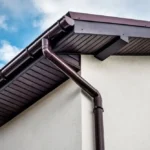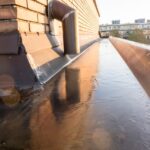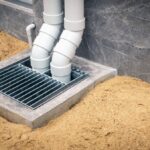Maintaining a clean roof is pivotal for homeowners eager to extend the lifespan of their roof while enhancing the overall aesthetic appeal of their homes. Deciding the best time of year to clean your roof is crucial. Not only does it prevent long-term damage but it also ensures the roof is functioning optimally.

Why Timing Matters
The importance of choosing the right season cannot be understated. Cleaning your roof at the optimum time keeps it free of debris, minimizes weather-related damage, and maintains its structural integrity.
Spring: A Season of Renewal
Many experts recommend spring as one of the optimal times to clean your roof. The melting of snow and the bloom of pollen can lead to a roof cluttered with leaves and debris.
Pros of Spring Cleaning
Spring offers moderate temperatures, making it safe and comfortable for thorough cleaning tasks. It’s an opportunity to assess any winter damage, repair minor issues, and prepare for heavy summer rains.
Cons of Spring Cleaning
In some regions, spring showers can disrupt cleaning schedules and leave the roof slippery and unsafe.
Summer: Sunlit Safety
Summer, with its extended daylight and clear days, is ideal for detailed roof checks and comprehensive cleaning.
Heat Considerations
High temperatures can lead to heat exhaustion, so it’s advisable to work during cooler morning hours.
Autumn: Preparing for Winter
Cleaning in autumn allows homeowners to clear fallen leaves, twigs, and prepare their roofs for the winter months.
Efficient Cleaning Tips
Autumn’s cool weather is conducive for outdoor work. Removing leaves is crucial as their accumulation can trap moisture.
Winter: Not Usually Recommended
Winter is typically discouraged due to hazardous icy conditions. If urgent, seek a professional’s help.
The Impact of Geography
Your geographic location dramatically affects the best timing for roof cleaning. Warmer climates allow for more flexibility than colder, winter-prone areas.
Regional Considerations
In the northern regions where snow is prevalent, autumn is often recommended. In contrast, spring is more suitable for the south.
Tools and Supplies for a Safe Clean
Essential Equipment List
Having the right equipment ensures safety and efficiency. Essentials include ladders, safety ropes, harnesses, gloves, and power washers.
Professional vs. DIY Cleaning
Deciding between professional cleaning and DIY depends on confidence and the condition of your roof. Experts provide thorough cleaning but entail a higher cost. DIY is cost-effective yet requires caution.
Safeguarding Tips
Always prioritize safety by checking weather conditions, wearing appropriate gear, and having someone nearby.
Environmentally Friendly Cleaning Practices
Opt for eco-friendly cleaning supplies to protect not only your roof but also the surrounding vegetation and environment.
Maintaining Your Roof Year-Round
Routine Inspections
Regular inspections aid in early damage detection, as detailed in our DIY Roof Inspection Checklist.
Roof Maintenance Benefits
Regular cleaning and maintenance prolong the life of your roof, as explained further in our Step-by-Step Roof Maintenance Guide.
Long-term Value
Well-maintained roofs contribute significantly to the property’s resale value.
Choosing the Right Cleaners
Choosing effective yet safe cleaning solutions can prevent damage to your roofs surface.
Integrating Technology in Roof Care
Employing drones for roof inspection is gaining popularity for its safety and thoroughness in areas hard to reach.
FAQs on Roof Cleaning
Why is regular roof cleaning necessary?
Regular roof cleaning prevents decay, structural damage and improves aesthetic appeal.
Can cleaning frequency affect roof damage?
Yes, infrequent cleaning can lead to accumulation of moss, algae that deteriorate shingles.
Are professional cleaning services worth the investment?
Professionals offer expertise and tools that ensure a more thorough and efficient clean, potentially saving future costly repairs.

Additional Resources
Check out community articles about roof maintenance for more insights.
This article contains affiliate links. We may earn a commission at no extra cost to you.







